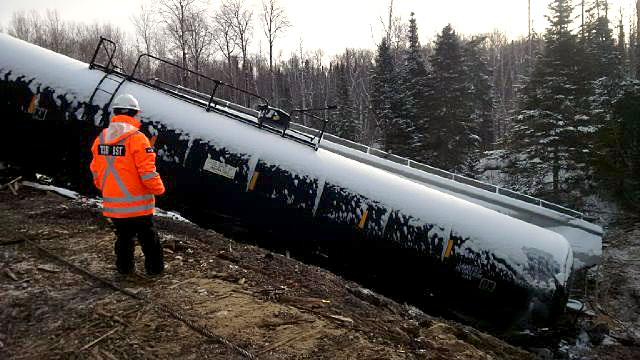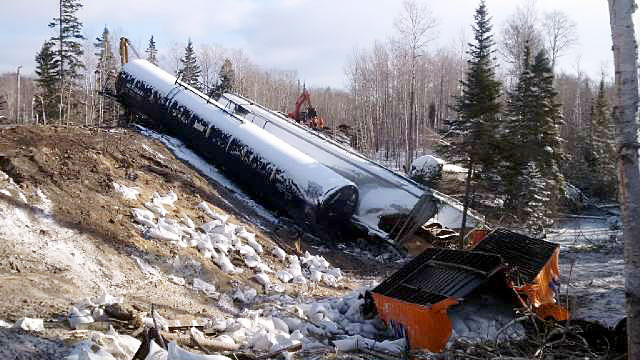Main-track derailment
Canadian Pacific Railway
Freight train 118-10
Mile 42.0, Nipigon Subdivision
Dublin, Ontario
The occurrence
On , at 1118 Eastern Standard Time, Canadian Pacific Railway freight train 118-10 was proceeding eastward on the Nipigon Subdivision at about 35 mph when it experienced a train-initiated emergency brake application at Mile 42.0 near Dublin, Ontario. Subsequent inspection determined that 21 cars had derailed. The derailed equipment included 7 dangerous goods tank cars loaded with propane (UN 1075, liquefied petroleum gas). As a result of the derailment, 1 tank car lost its entire load and another tank car released product. One crew member sustained minor inhalation injuries.
Media materials
Deployment notice
TSB deploys a team to the site of a derailment involving a CP freight train east of Thunder Bay, Ontario
The Transportation Safety Board of Canada (TSB) is deploying a team of investigators to a derailment involving a Canadian Pacific freight train derailment approximately 140 kilometres east of Thunder Bay, Ontario. The TSB will gather information and assess the occurrence.
Investigation information
Download high-resolution photos from the TSB Flickr page.
Class of investigation
This is a class 3 investigation. These investigations analyze a small number of safety issues, and may result in recommendations. Class 3 investigations are generally completed within 450 days. For more information, see the Policy on Occurrence Classification.
TSB investigation process
There are 3 phases to a TSB investigation
- Field phase: a team of investigators examines the occurrence site and wreckage, interviews witnesses and collects pertinent information.
- Examination and analysis phase: the TSB reviews pertinent records, tests components of the wreckage in the lab, determines the sequence of events and identifies safety deficiencies. When safety deficiencies are suspected or confirmed, the TSB advises the appropriate authority without waiting until publication of the final report.
- Report phase: a confidential draft report is approved by the Board and sent to persons and corporations who are directly concerned by the report. They then have the opportunity to dispute or correct information they believe to be incorrect. The Board considers all representations before approving the final report, which is subsequently released to the public.
For more information, see our Investigation process page.
The TSB is an independent agency that investigates air, marine, pipeline, and rail transportation occurrences. Its sole aim is the advancement of transportation safety. It is not the function of the Board to assign fault or determine civil or criminal liability.

